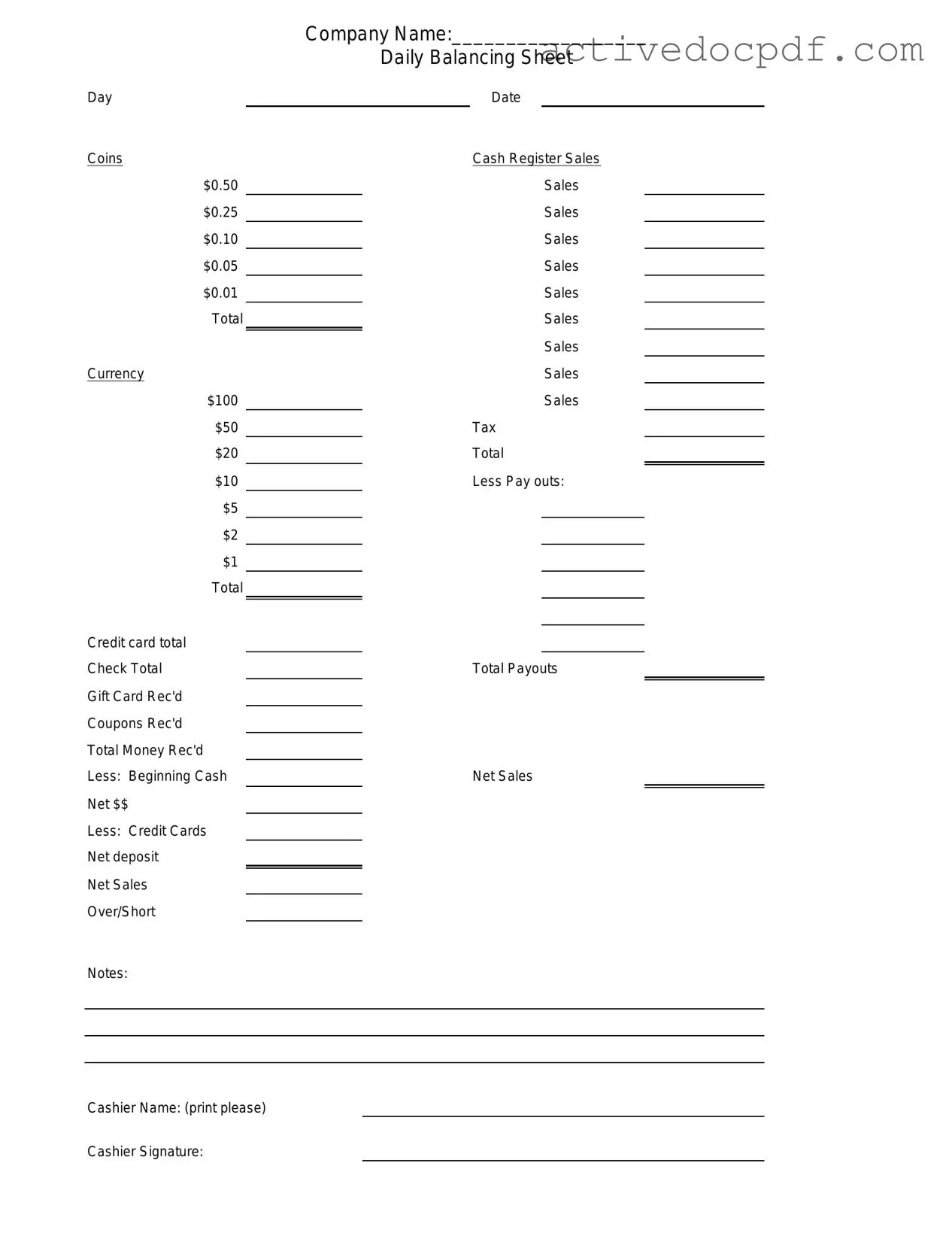What is a Cash Drawer Count Sheet?
A Cash Drawer Count Sheet is a document used by businesses to record the amount of cash in a cash drawer at a specific time. It helps ensure that the cash on hand matches the sales recorded during a shift or day. This form is essential for maintaining accurate financial records and preventing discrepancies.
Why is it important to use a Cash Drawer Count Sheet?
Using a Cash Drawer Count Sheet is crucial for several reasons:
-
It helps track cash flow, ensuring that all transactions are accounted for.
-
Regular counts can identify discrepancies early, reducing the risk of theft or errors.
-
The sheet serves as a record for audits and financial reviews, providing transparency in cash handling.
How often should I complete a Cash Drawer Count Sheet?
The frequency of completing a Cash Drawer Count Sheet can vary based on the business's needs. Generally, it is advisable to complete the count at the end of each shift or day. For businesses with high cash volume, more frequent counts may be necessary to maintain accuracy.
A comprehensive Cash Drawer Count Sheet should include:
-
The date and time of the count
-
The name of the person conducting the count
-
The starting cash balance
-
The total sales for the period
-
The ending cash balance
-
Any discrepancies or notes regarding the count
How do I handle discrepancies found during the cash count?
If a discrepancy is found during the cash count, it is important to take immediate action. First, double-check the count to ensure accuracy. If the discrepancy persists, document it on the Cash Drawer Count Sheet, noting any potential reasons for the difference. Report the issue to a supervisor or manager, who may conduct a further investigation to determine if there was an error or if theft occurred.
Yes, many businesses opt for digital formats for their Cash Drawer Count Sheets. Using spreadsheet software or specialized accounting applications can streamline the counting process and make it easier to track historical data. However, ensure that digital records are backed up and secure to prevent data loss.
Is training necessary for employees using the Cash Drawer Count Sheet?
Training is highly recommended for employees responsible for cash handling. Proper training ensures that staff understand how to accurately complete the Cash Drawer Count Sheet and recognize the importance of maintaining accurate records. This can help minimize errors and foster a culture of accountability.
What should I do if my business has multiple cash drawers?
For businesses with multiple cash drawers, it is essential to maintain a separate Cash Drawer Count Sheet for each drawer. This practice allows for precise tracking of cash in each location. Additionally, consider implementing a system to consolidate the data for overall cash management.
How long should I keep the Cash Drawer Count Sheets?
Cash Drawer Count Sheets should be retained for a minimum of three years, in line with standard financial record-keeping practices. Keeping these records can be beneficial for audits, tax purposes, and internal reviews. Ensure that they are stored securely to protect sensitive financial information.
